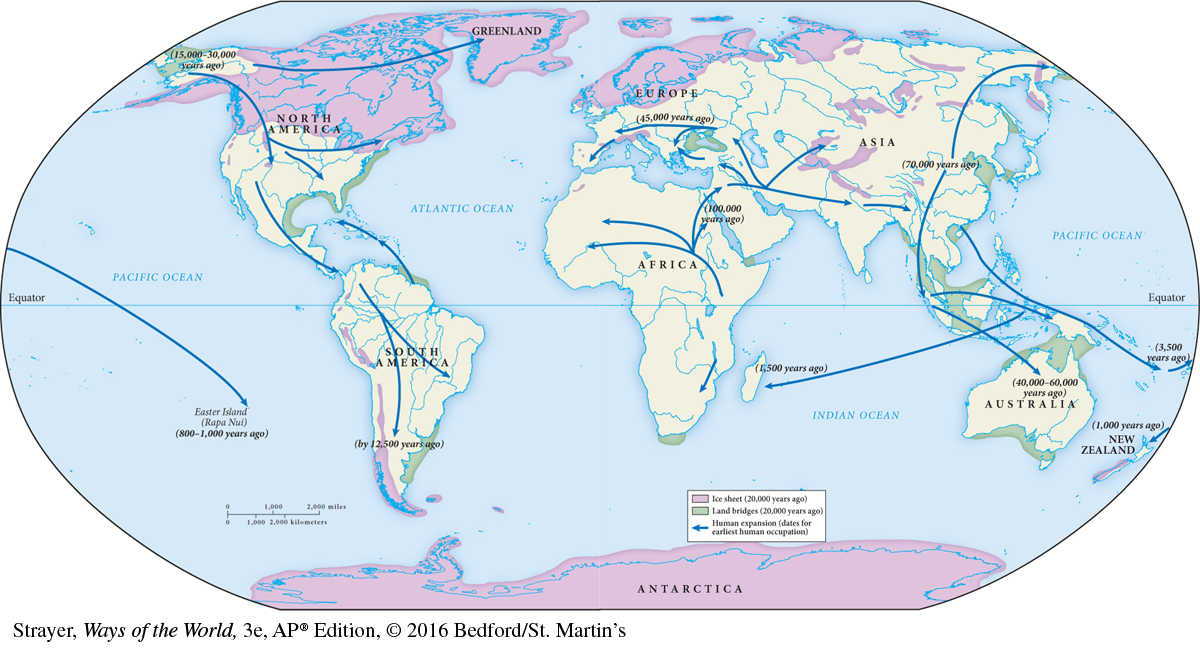Out of Africa: First Migrations
The first 150,000 years or more of human experience was an exclusively African story. Around 200,000 to 250,000 years ago, in the grasslands of eastern and southern Africa, Homo sapiens first emerged, following in the footsteps of many other hominid or human-
What kinds of uniquely human activity show up in the early African record?2 In the first place, human beings began to inhabit new environments within Africa — forests and deserts — where no hominids had lived before. Accompanying these movements of people were technological innovations of various kinds: stone blades and points fastened to shafts replaced the earlier hand axes; tools made from bones appeared, and so did grindstones. Evidence of hunting and fishing, not just the scavenging of dead animals, marks a new phase in human food collection. Settlements were planned around the seasonal movement of game and fish. Patterns of exchange over a distance of almost 200 miles indicate larger networks of human communication. The use of body ornaments, beads, and pigments such as ochre as well as possible planned burials suggests the kind of social and symbolic behavior that has characterized human activity ever since. The earliest evidence for this kind of human activity comes from the Blombos Cave in South Africa, where excavations in 2008 uncovered a workshop for the processing of ochre dating to around 100,000 years ago, well before such behavior surfaced elsewhere in the world.
AP® EXAM TIP
Global migration patterns of early humans are an important concept in world history. Also see Map 1.1.
Then, sometime between 100,000 and 60,000 years ago, human beings began their long trek out of Africa and into Eurasia, Australia, the Americas, and, much later, the islands of the Pacific (see Map 1.1). In occupying the planet, members of our species accomplished the remarkable feat of learning to live in virtually every environmental setting on earth, something that no other large animal had done; and they did it with only stone tools and a gathering and hunting technology to aid them. Furthermore, much of this long journey occurred during the difficult climatic conditions of the last Ice Age (at its peak around 20,000 years ago), when thick ice sheets covered much of the Northern Hemisphere. The Ice Age did give these outward-
